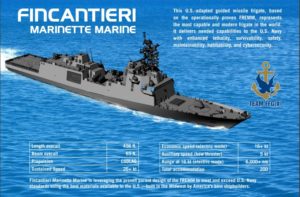
Pushing up the decision by three months, the Navy on Thursday awarded Fincantieri’s Marinette Marine a $795 million detail design and construction (DD&C) contract for the FFG(X) guided-missile frigates over three rival bids. The contract provides for delivery of up to 10 FFG(X) ships, post-delivery availability support, engineering and class services, crew familiarization, training equipment and provisioned item orders. The frigate competition required “parent designs” to speed up the process of producing and delivering the vessels. Ficantieri offered a modified…

 By
By 











